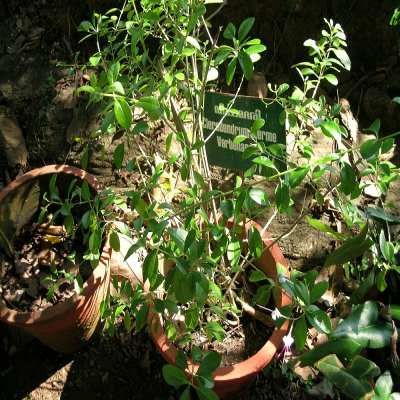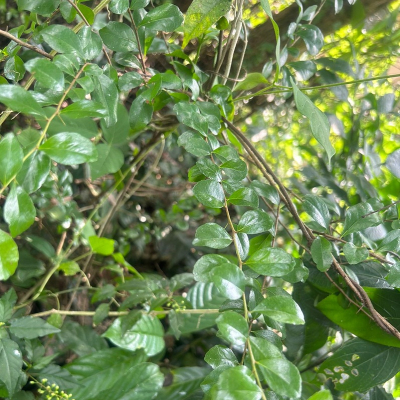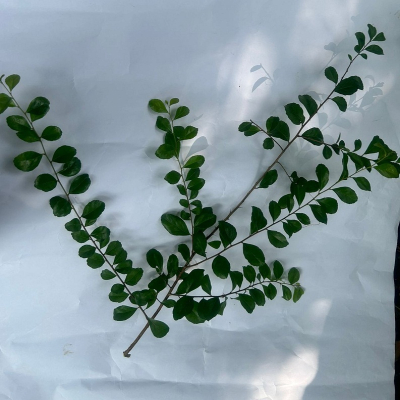Volkameria inermis L.
Synonyms : Clerodendrum inerme (L.) Gaertn.
Family : Lamiaceae
Parts Used : Root , Leaf
Vernacular Names :-
| English | : | Clerodendrum |
| Malayalam | : | Vishamadari |
| Hindi | : | Lanjai, Sangkupi |
| Sanskrit | : | Kundali, Samudrayuthika |
| Bengali | : | Vanajai |
| Tamil | : | Anjali, Nirnochi, Pinarichanganguppi; Sarupparachi |
| Telungu | : | Etipisangi, erupucha, Nillavuppi, Pisangi, Takkolamu, Uti. |
Distribution and habitat: Throughout India
Botany: A straggling much branched shrub 0.9- 2.1 m long, sometimes scandent. Bark pale brown. Branches twiggy.
- Leaves: Opposite, elliptic or ovate, obtuse, glabrous or nearly so, base acute. Petioles 6-10 mm long.
- Flowers: In axillary pedunculate cymes 3-9 (commonly 3) flowered. Peduncles long, slender, 1.3 - 4.5 cm long. Calyx enlarged in fruit, glabrous or puberulous, leathery. Corolla white, tube long, slender, glabrous outside, very hairy inside. Filaments very long, hairy at the base, much exserted. Ovary and style glabrous, stigma acutely 2 lobed.
- Fruit: Drupe pyriform, 1.3- 1.6 cm long, seated in the veined persistent enlarged calyx, separating in to 4 woody pyrenes.
Properties: anticancer, antiinflammatory, antioxidant etc
Chemical constituents: Hispidulin, acacetin, and diosmetin, crolerodendrum
Uses: Scrofulous, venereal affections
Propagation: Seeds.




